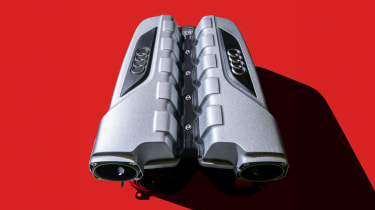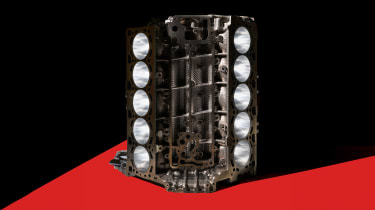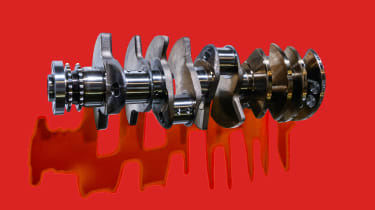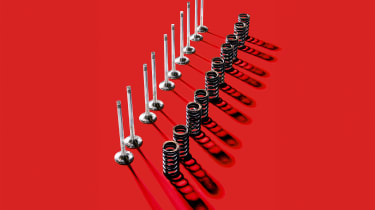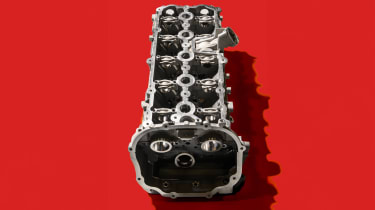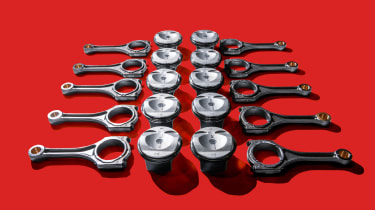The anatomy of a V10: Audi and Lamborghini's final naturally aspirated engine
Developed by Lamborghini and built by Audi, here are the key components of both brands’ last naturally aspirated engine
After decades of use in some of our favourite supercar models to date, the Audi R8 GT RWD and Lamborghini Huracán Tecnica mark the end of the line for Volkswagen Group's iconic naturally-aspirated V10. In issue 314, we took to the Stelvio Pass with the swansong models, reminding us just how special that V10 is in a world of forced induction and hybrid assistance. To pay our respects, we dive into its anatomy.
It was the first all-new engine to be developed by Lamborghini after Audi bought the Italian marque in 1998 for $110m. Starting life as a 5-litre unit in the Gallardo in 2003, this mesmerising powerplant has since propelled Lamborghini’s ‘entry-level’ models for two decades and Audi’s mid-engined supercar for the last 16 years too.
Built in Audi’s vast, 5 billion-square-metre production facility in Gyõr, Hungary, each of today’s 5.2-litre V10s is hand-assembled using 250 parts and takes six hours in total to build, with 19 put together per shift. Upon completion, every road-car engine is bench-tested for 90 minutes, with those destined for race cars spending 4.5 hours on the bench.
> Naturally aspirated engines – best of the breed from 4-pots to V12s
Engine block
Each block arrives in the assembly hall as a single aluminium casting, where it is separated, cleaned and inspected before entering the production process. The finished V10 measures 646mm (25in) long, 737mm (29in) wide and 696mm (27in) high.
Crankshaft
The forged-steel crank sits inside an aluminium crankcase with non-split crank-pins. Where the original Lamborghini 5-litre V10 created an even 72-degree firing order, the latest 5.2-litre engine has uneven firing intervals of 90 and 54 degrees, improving acceleration.
Valve gear
Each V10 engine requires 40 titanium valves for its four-valve cylinder heads, but while those used in the road cars are sourced from the US, Audi sources valves for its V10 race engines from a specialist German supplier.
Cylinder head
As with the block, the V10’s 40-valve cylinder head is cast from aluminium and is both X-rayed and visually inspected by hand before its components are installed. It’s fed by a dry-sump lubrication system, with a complete engine weighing 258kg, 31kg more than the first-generation R8’s V8.
Induction system
Manufactured from a lightweight plastic, the V10’s air intake, intake manifold and cam covers represent the most significant changes between an Audi and a Lamborghini V10. Each engine is given an Audi or Lamborghini engine number before production begins, although the engine doesn’t know its final identity until the ECU is plugged in to tell it.
Pistons & con rods
The ten pistons are left- and right-sided per cylinder bank; the V10’s connecting rods, manufactured by a specialist outside supplier, cost four times those used in the R8’s original V8. Forged from aluminium alloy, each piston travels at 26.9 metres per second at the engine’s 8700rpm limit (peak power arrives at 8000rpm).
This page first featured in evo issue 314.

